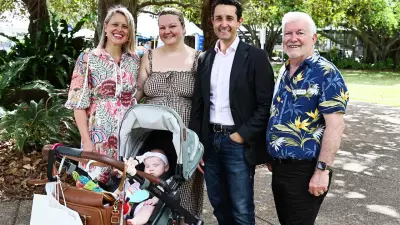
Australia's premier scientific organisation, CSIRO, has reached a critical financial turning point that will see significant restructuring and potential job losses affecting hundreds of staff members.
Financial Reality Bites National Science Agency
In a sobering announcement, CSIRO chief executive Dr Doug Hilton revealed the organisation faces mounting financial pressures that can no longer be ignored. The national science agency will potentially impact between 300 and 350 staff positions as part of a comprehensive review of its research portfolio.
The financial strain has been building over years, with CSIRO's appropriation increasing by only 1.3 percent annually over the past 15 years, while inflation averaged 2.7 percent. The situation is exacerbated by the rapidly rising costs of running a modern science agency, particularly in areas like computing and cybersecurity.
"We have reached a critical point," Dr Hilton stated. "As today's stewards of CSIRO, we are determined to again evolve and adapt. This is not a choice, it's an imperative because scientific research and development are at the core of Australia's future."
Infrastructure Crisis and Maintenance Backlog
The scale of CSIRO's operational challenge is substantial. The organisation manages 45 sites across every state and territory, including more than 800 buildings and scientific facilities. These range from laboratories and telescopes to farms, a marine research vessel, experimental bushfire tunnel, and the crucial Australian Centre for Disease Preparedness.
Alarmingly, more than 80 percent of CSIRO's 840 buildings are past their technical end of life. The organisation faces a $280 million backlog of repair and maintenance, with the cost of refurbishing a single facility like the Australian Centre for Disease Preparedness estimated at around one billion dollars.
"This is neither supporting our science nor serving Australians well and, if left unchecked, will pose an unacceptable safety risk for staff," Dr Hilton warned.
Strategic Refocus and Future Priorities
To achieve long-term sustainability, CSIRO will shift its scientific focus to areas where it can deliver impact at scale. Key priority areas include:
- Transitioning to net zero with clean, reliable and affordable energy
- Developing clean processing methods for critical minerals
- Building climate change resilience and adaptation
- Protecting against biosecurity threats to agriculture and communities
This strategic refocus means CSIRO will deprioritise some research areas where it lacks scale or where other research organisations are better positioned to deliver results.
Beyond the immediate staffing impacts, CSIRO requires additional investment of $80 million to $135 million annually for the next decade to properly maintain facilities, ensure equipment is fit for purpose, and maintain cybersecurity standards.
Despite the challenging circumstances, Dr Hilton expressed optimism about CSIRO's future, citing widespread community support and trust in science as foundations for the organisation to continue delivering the research Australia needs to flourish in coming decades.





